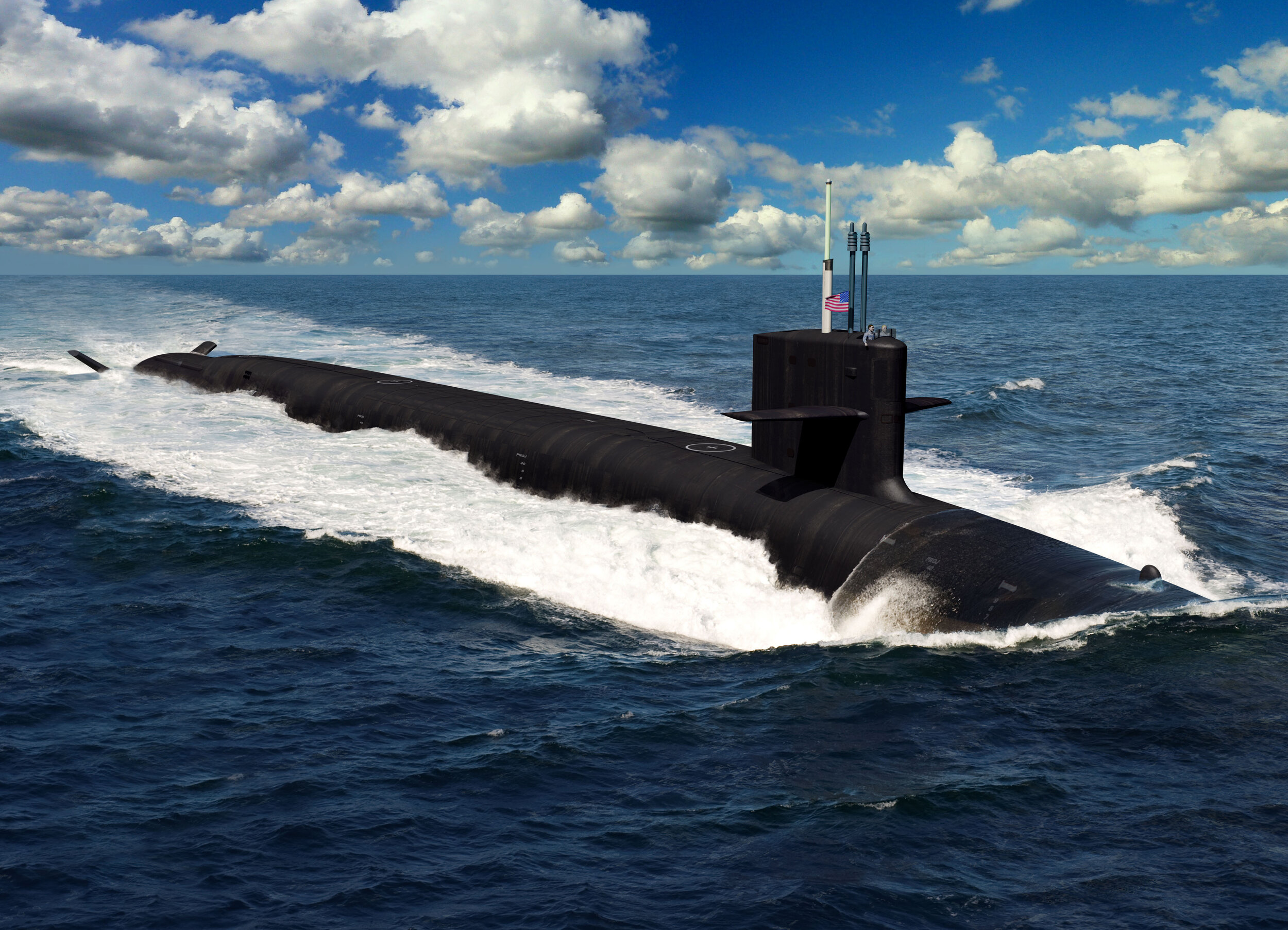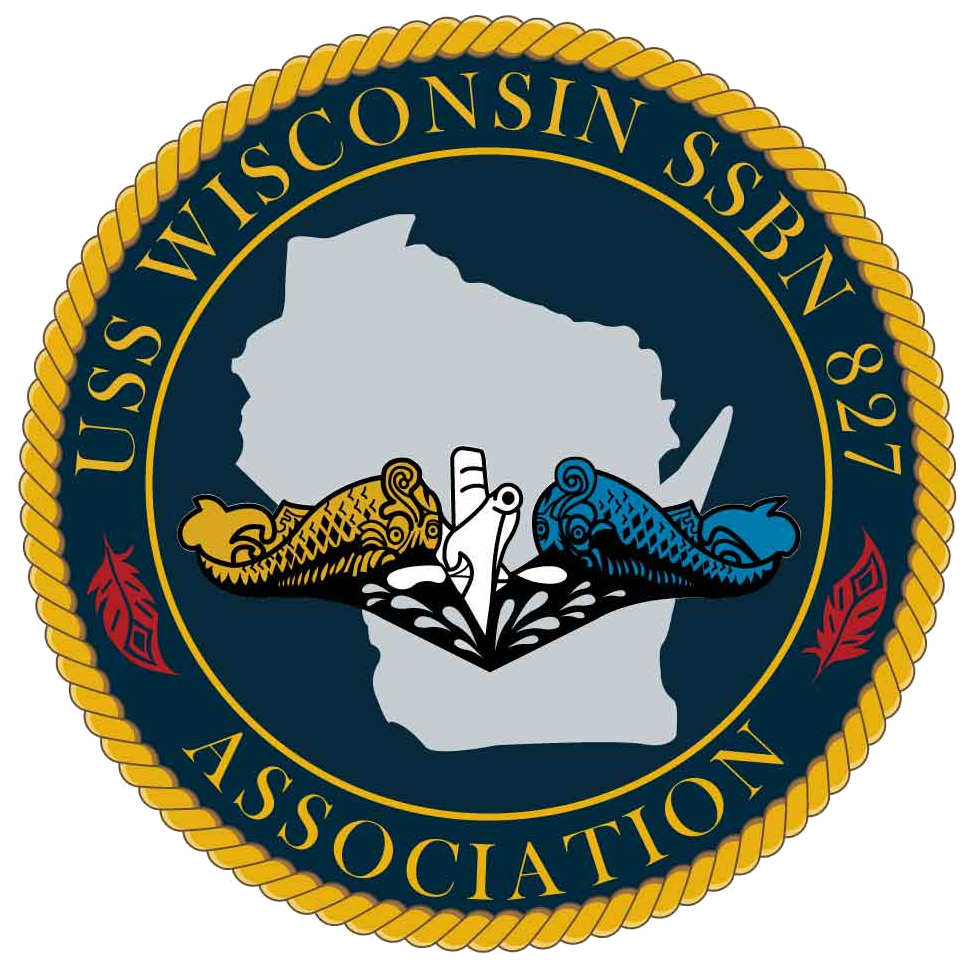
Ceremonial Milestones
It takes about 8 years to build a Columbia class submarine. The DISTRICT of COLUMBIA (SSBN 826) Class submarines are slated to replace the OHIO (SSBN 726) TRIDENT submarines and will have a critical role as the sea-based and most survivable leg of the nation’s strategic deterrence nuclear triad. The program is the Department of the Navy’s and the Department of Defense’s number one priority acquisition program. Congress authorized the program and provided procurement funding starting in FY21.
There are many milestones in the laying down, launching, and Commissioning of a ship of the United States Navy. Below are just a few of them.
Naming - October 28, 2020
Secretary of the Navy Kenneth J. Braithwaite announced on October 28, 2020 the second Columbia class ballistic missile submarine, SSBN 827, would be named in honor of the state of Wisconsin.
Keel Laying – Anticipated in 2025
This ceremony marks the formal recognition of the start of a ship's construction. In earlier times, the Keel Laying was the "laying down" of the central or main timber making up the backbone of a vessel. Today, fabrication of the ship may begin months before and some of the ship's bottom may actually be joined. However, the Keel Laying Ceremony (also referred to as the Keel Authentication Ceremony) symbolically recognizes the joining of modular components and the ceremonial beginning of construction of a ship.
During the Keel Laying ceremony, the ship's sponsor authenticates the keel by chalking her initials onto a metal plate. The initials are then welded onto a plate that is permanently affixed to the ship.
Christening – Anticipated in Fiscal Year 2029
The official launching ceremony recognizing the "floating" of a ship by name. This ceremony is typically marked with the traditional breaking of a bottle of champagne across the bow.
The blessing of ships dates as far back as the third millennium BC, when the ancient Babylonians, according to a narrative, sacrificed an oxen to the gods upon completion of a ship. Throughout history, different cultures developed and shaped the religious ceremony surrounding a ship launching.
Today the Christening is often conducted before the launching. The ship's sponsor, who is traditionally a woman, breaks a bottle of champagne on the hull of the ship and ceremonially gives the ship its name. The first recorded Christening of a United States Navy ship is USS Constitution, on Oct. 21, 1797 in Boston. The ship's sponsor, Capt. James Sever, broke a bottle of wine across the bow as "Old Ironsides" slid into the water.
If you are interested in attending the Keel Laying, Christening or Commissioning, please periodically check our Upcoming Events page. We will post updates there when more information is available.
Sea Trials
An intense series of tests at-sea in which the shipbuilders and the Navy demonstrate the satisfactory operation of all installed shipboard equipment. Sea Trials ensure that the performance of the ship as a whole is in accordance with its requirements and specifications. New construction ships undergo Builder's Trials and Acceptance Trials prior to ship's delivery, and Final Contract Trials several months after delivery and sail away.
Delivery
The official turnover of custody of a ship from the shipyard to the U.S. Navy. This private ceremony involves the Prospective Commanding Officer who actually signs for the ship. This event normally coincides with Move Aboard when the Pre-Commissioning Unit (PCU) crew moves aboard and starts living, eating, standing watch, training and working aboard the ship while final work continues in the shipyard.
Sail Away
The ship's final departure from the construction yard for its homeport or Commissioning site. It signifies the end of the new construction period and the beginning of its life, preparing to perform the mission it was designed to undertake.
Commissioning - Anticipated in Fiscal Year 2031
The Commissioning ceremony marks the acceptance of a ship as a unit of the operating forces of the U.S. Navy. The act of placing a ship in commission marks her entry into active Navy service. At the moment that the Commissioning pennant is broken at the masthead, the ship will "come alive" and the crew will ceremonially run aboard. The ship is thereafter officially referred to as a United States Ship (USS), becomes a Navy command in her own right and takes her place alongside the other active ships of the Fleet.
This ceremony continues a centuries-old tradition, observed by navies around the world and by our own U.S. Navy since December 1775, when Alfred, the first ship of the Continental Navy, was Commissioned in Philadelphia. Once in commission, the Commanding Officer and crew are entrusted with the privilege and responsibility of maintaining their ship’s readiness in peace, and of conducting successful operations at sea in time of war.
No written procedure for Commissioning was laid down in our Navy’s early days, but the act of Commissioning was familiar, derived from established British naval custom. Commissionings were simple military ceremonies. The prospective Commanding Officer came on board, called the crew to quarters, and formally read the orders appointing him to command. He then ordered the ensign and the Commissioning pennant hoisted; at that moment the ship went into commission, and the first entry in the ship’s deck log recorded this important ceremonial event.

